#zoology gallery
Explore tagged Tumblr posts
Text

Some facts about the warden
#artists on tumblr#mineblr#my post#digital artist#small artist#character design#indie games#minecraft#minecraft art#minecraft oc#gaming#speculative biology#speculative zoology#speculative fiction#warden minecraft#frog#axolotl art#minecraft character#artist support#fanart#art gallery#creature design#creature#illagers#minecraft illager
1K notes
·
View notes
Text
Fun fact: #DYK of the 21 living species of Armadillos (Order Cingulata), only the Three-Banded Armadillos (Tolypeutes genus, 2 species) can roll up into a ball like this.

Graham Sutherland (British, 1903-1980) Armadillo, 1968 Lithograph from the Bestiary series 6.59 x 5.00 cm Christchurch Art Gallery Te Puna o Waiwhetū
#armadillo#Cingulata#Three-banded Armadillo#Tolypeutes#zoology#mammalogy#DYK#lithograph#print#works on paper#20th century art#British art#European art#Graham Sutherland#Christchurch Art Gallery Te Puna o Waiwhetū#animals in art
116 notes
·
View notes
Text





Some bird world doodles! Mostly thinking about the anatomy of these little freaks <3
Notes about said anatomy
-chest is larger and bumps out further to account for larger lungs and muscles
-collarbones sits lower to account for Crop
-lower spine/tail bone is larger and longer for tail
-bird leg
#psychonauts#psychonauts au#wingz au#wingz world#bird au#sasha nein#milla vodello#psychonauts 2#silly art gallery#robin stenzke#speculative biology#speculative worldbuilding#speculative evolution#speculative zoology#pencil sketch
11 notes
·
View notes
Text
Gonna add that fauna and flora wise, deserts have some of the most interesting and fascinating plants and animals because they had to come up with all kind of crazy adaptations and mutations to survive.
Also the whole "looks dead but is actually full of incredible life" thing deserts have going on is one of my favorites subvertion of expectation nature pulled on the modern, average human
“oh, I live in a desert and-”
“wow that must be so terrible” “deserts are so ugly” “I would never want to live in a wasteland like that” “it’s just empty nothingness”
wishing 10,000 exploding hammers upon you
behold New Mexico


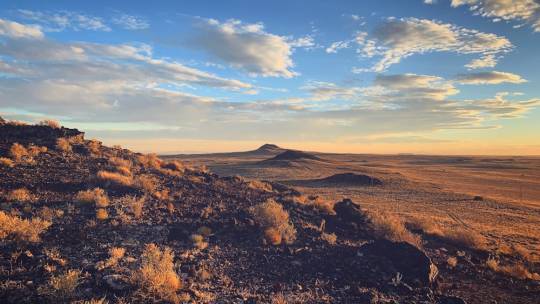
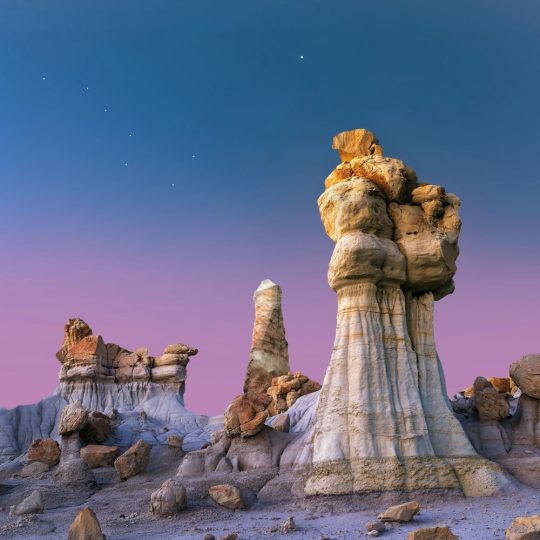
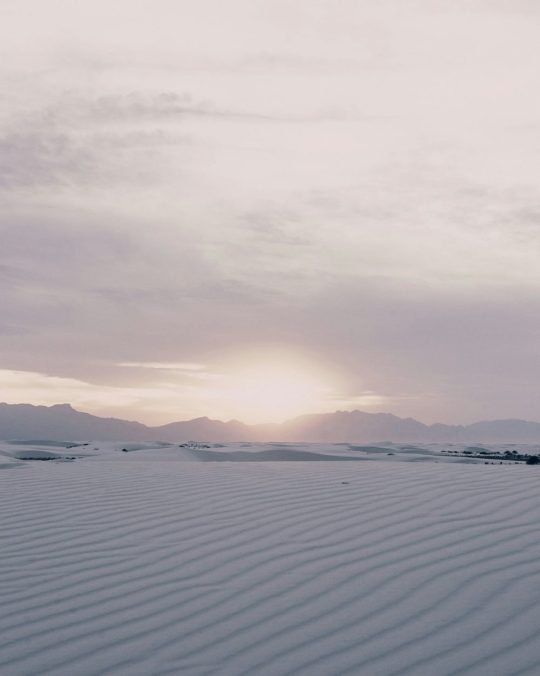
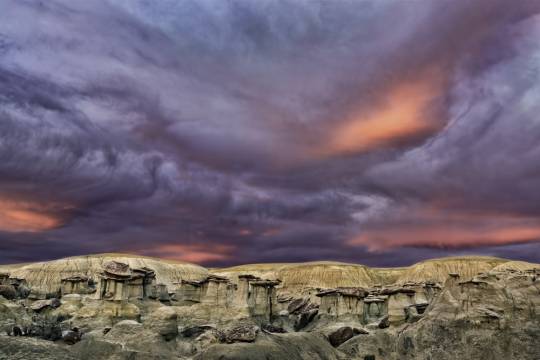
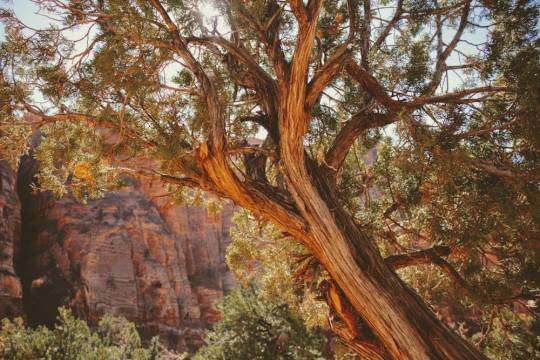
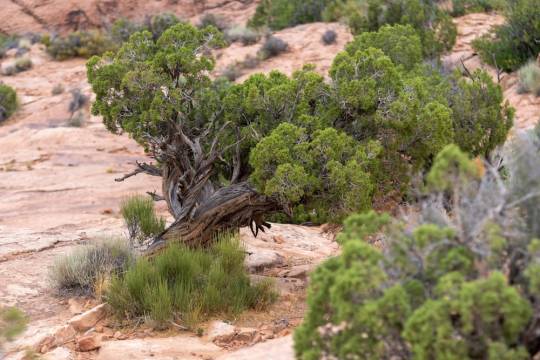
[ID 1: tall, snowcapped rocky mountains rising above a plain filled with desert scrub
ID 2: brightly colored banded cliff walls of several mesas climbing their way into mountains
ID 3: a desert prairie
ID 4: colorful hoodoos against a twilight sky
ID 5: white sand dunes as far as the eye can see
ID 6: a collection of hoodoos against a stormy sky at sunset
ID 7: a juniper tree standing with a cliff wall in the background
ID 8: several juniper trees on a rocky landscape]
#deserts are amazing#there's a type of mouse that has a bunch of crazy adaptations to extreme heat#they dig galleries and have a very concentrated urine and very dry feces#and are adorable but that's a bonus#deserts have some of the few living fossils from the plant world#there's a bunch of gymnosperms that only thrive in deserts#now if you recall from your biology class gymnosperms are like pines and otger evergreens (it's the adaptation of the seed#the seed is not covered#yes this is an love letter to nature bear with it#also study ecology and zoology kids#botanics too but you need a good teacher for it#bc plants are fascinating beings but few people see them for what they truly are bc they don't move and bc botanics is taught in a very dry#systematic manner that is not as exciting as they deserve
49K notes
·
View notes
Text
Tidbits about Sledge from China Marine:
He had a horse- mentions it in a throwaway line
couldn't shoot a dangerous dog because he was a "sentimental dog-lover" in his words (honestly same)
loved Mozart and other classical music
Loved philosophy
Loved history- look this man's a nerd, he was more interested in the historical sites of Beijing like the Forbidden City than all the other guys who focused on women and drinking (good for him honestly lol- probably better that way tbh too)
Was not a party guy- getting those vibes, introvert maybe?
hated vodka
Was not a drinker- his dad schooled him early about the problems with that, so Sledge to his admission, only really had like a beer or two at most usually
Went to a party out of spite/to prove he was right
Got sepsis from the sores on his fingers- he got better tho, but did have to wear a sling
Kinda a prankster honestly on two occasions with some buds
learned a bit of Chinese from a guy called How (hope I'm spelling it right) who was a paid houseboy for the Marines- he was Sledge's age, and was better with learning English than Sledge learning Chinese- they became friends and How showed him all the cool historical spots
Loved Chinese food- like all the Marines, tried to eat at local restaurants instead of the sea rations/gallery/shitty cafeteria food they were given on barracks- honestly I'd do the same. They even recruited a guy who got leave to bring back like boxes of takeout just to avoid the food if they couldn't leave the garrison.
has some beef with rear echelon guys- not unique between combat vets and non-combat guys
Interested in learning about other cultures- he became good friends with Dr. Song- a chinese doctor who was head of a hospital in Beijing- and the Song family, plus their resident Catholic priest, Father Marcell.
Was apparently a really fun professor post-war, he took his students on birdwatching walks as part of his classes- would have loved to see him on Rate My Professor
Huge nature nerd- could always name birds, plants, insects etc he saw- ended up taking birdwatching after the war.
Got offered tea by a captured japanese officer- what a wild trip that must've been.
Got accidently reported missing at one point on Pelelui- nearly gave his parents a heart attack- they literally aged with worrying about their sons in combat
had beef about people complaining about 'minor' things compared to his time in combat- something shared by other of his buds
his dad called him Fritz- also had a pep talk about him not getting bitter like in point 20, avoiding alcohol
has beef w/jocks- gets respect from former bullies? due to combat experience.
He met his wife at a friend's wedding (she was a bridesmaid) and they so infatuated by each other they could barely concentrate on wedding duties- funny but sweet.
became a good shot at dove hunting because he didn't want to make the dove suffer, just one clean kill or nothing pre-war
got his bachelors in business and sold insurance for a bit before realizing bio/nature was his thing lol
got his phd in zoology in 62- go you sledge
#the pacific#eugene sledge#he's an animal lover alright#and a nerd and a bit of a prankster#who is just a bit petty#but we love him anyway#need to see this man's stats on rate my professor#internet came too late I guess
39 notes
·
View notes
Text
september diaries.

getting my shi- back together..|
academics
physics - work energy and power - [2hr]
chemistry - chemical bonding [13 hr lecture]
zoology - human circulation [30 minutes]
backlogs
skin care
iced my face
face mask check
hair serum
personal and digital hygiene
cleaned my room
cleared my gallery + theme change
arranged my book rack
entertainment
man in love
under the hawthorn tree
university war

new theme check.


#studyblr#study blog#study aesthetic#study motivation#student#premed#student life#study notes#study desk#academic validation#studyspo#cleancore#chaotic academic aesthetic
47 notes
·
View notes
Text

The zoology gallery of the Jardin des Plantes, Paris, France, 1980 - by François Le Diascorn (1947), French
307 notes
·
View notes
Text
Not Magic, Science Part 3
Danny stared at the young CEO of Wayne Enterprises. Mr. Drake-Wayne was five years old when the Fentons stole his dna for tgeir clone kid project. The Fentons didn't use accelerated aging, their notes said there could be developmental risks in doing so and they wanted their own little genius to be perfect.
Danny was exactly five years, nine months, and six days younger than Timothy Drake-Wayne.
Five years ago Timothy Drake was eleven years old, with his own photogarphy gallery and charming rich old ladies at galas.
When Danny was eleven he was starstruck at space camp and building model rockets in his bedroom.
Wayne Enterprises was interested in working with FentonWorks too mass produce ecto-fueled vechiels, as well as exploring ecto energy more. Danny let Mr. Drake-Wayne's voice wash over him, professional and commanding, confident.
Everything Danny should have been, everything Danny was supposed to be. No wonder his parents were never proud of him, he was a pale imitation of Timothy Drake.
"Before we go that far though, what exactly is Ectoplasam?"
Danny knew that question was coming. He came prepared but his slide show felt very childish compared to everything Mr. Drake-Wayne had presented. He clutched his usb, and plugged it into the presenter's laptop.
"Everything that lives creates Ectoplasam. It is the energy of emotions, the spark that fuels life. Everything that lives, must then eventually die, and with death is the release of the remaining ectoplasam in their body. The ectoplasam would then disperse into a demension known as the Infinte Realms, where it either forms an Ecto-Entity or is cleansed and released into a living relam as a new lifeform. This process can take from a year to a thousand years to complete. The FentonWorks Ecto Processor takes the Ectoplasam in the air and turns it into useable energy-"
Ectoplasam was fascinating, but so was the teenage clone trying to be professional. It had been so easy to find the files, to find who and how, then why made itself perfectly clear not long after.
Tim couldn't really call the kid his clone anymore. Sure that's what their invesitagtion had been sparked by, an uncanny valley look-a-like on the cover of Damian's News in Zoology magazine. But Daniel Fenton wasn't made to replace Tim. No, he was made to be the perfect Heir to the FentonWorks bussiness and research, just like Tim had been for Drake Industeries.
The slide came to a silly photo of a cartoon ghost, Fenton hastily trying to skip it, and the following slid being a cutesy diargam of the Ectoplasmic life cycle. Fenton blushed, speaking a bit quicker on where Ectoplasam comes from and how it cycles through all demensions, before skipping to a more plain info graphic.
Tim wasn't sure what to do, or if he really should do anything, regarding the cloning issue. The ones who had done it were dead, the boy himself wasn't a bad person. Frankly it was more like meeting a cousin than anything.
"We are in agreement then?" Tim asked, standing to shake Fenton's hand. "There's plenty of time to discuss the contract another time, with lawyers. Wayne Enterprises looks forward to working with you Mr. Fenton,"
"Of course Mr. Drake-Wayne," Fenton nodded. "Thank you for seeing me today,"
"Would you join me for lunch?" Tim asked. "I'd like to talk more in a more casual setting,"
Fenton hesitated, fidgiting with the usb between his fingers, before nodding.
Tim had hope lunch would go well, it'd be nice to have another tech-minded person to talk to.
20 notes
·
View notes
Text
from the palace Aperture of Heaven - where Her Carnelian Glory The Empress spends her days draped across her hoard bathing in the ruby sunlight, where hundreds if not thousands of kitchens and ballrooms and libraries and galleries and vaults spiral down through serpentinite catacombs to scrape the top of the upper mantle and siphon off heat for ovens and baths and iron foundries - from the gates of that palace there descend steps - and those steps themselves tall as mountains, their landings boasting fountains and gardens and statues of Her Grace in every bestial guise known to zoology or poetry, and having a population equal to a large neighborhood of lesser cities than The City, consisting of petitioners to Her Radiance (some of whom have been camped out on those steps for months), carts selling pilgrimage badges and icons and other mementos, the aides to palace officials and the stationery shops that support them, the proprietors and cooks and waiters of the myriad teashops and coffeehouses and restaurants and food carts of that district, and countless lazurite soldiers to descend upon the scene when the press of bodies threatens to erupt in madness. from the bottom of those stairs proceed the Victory Road, the vast parade grounds and scene of the triumphal procession, constantly covered in a fine layer of black sand and dust that stinks of gunpowder (the residue of innumerable fireworks displays), two miles wide and twenty-six miles long as it cuts through the Royal Gardens that ring Aperture of Heaven and provides a straight path to the Cosmodrome, the place where the heavens most deeply descend to kiss the sun-warmed earth.
43 notes
·
View notes
Text
Nature is art and we, (yes you!) are nature 🖼️🌷🫂(U4)
I was never necessarily interested in going to art galleries as a kid, but man, did I beg to go to the museum. A building with a collection of natures finest treasures and cryptic oddities sounded like a fun place the second I learned what it was, but I guess the beautiful art of paintings and sculptures didn’t quite do it for me. Even now, I much prefer museums to galleries (incoming likely an extremely controversial take🚨🚨🚨), with my personal trips to the Toronto ROMs natural history exhibit and my experience of seeing the Mona Lisa and other works in Paris’ Louvre being almost equally as exciting. (I will accept any science nerd comments with dignity, I know my truth.)
Thinking about who I am to interpret both nature through art and the gift of beauty, I’ve learned to notice that my perspective in nature interpretation sits on the intersection of science and art. In my opinion, it’s crucial to recognize that when interpreting, you don’t have to pick one or the other since they often compliment each other tremendously. In this week’s readings, I thought the quote “Our ability to perceive quality in nature begins, as in art, with the pretty,” is a perfect summary of how I feel I was initially drawn to nature; but I suspect my strong personal preference to the living art comes from the many why’s and how’s to be asked of it. While the answer “because the artist thought so” is perfectly acceptable to me in most cases when inquiring about a painting or something, the questions begging to be asked by nature- like where it comes from or why it does something- inspire me to take part on a much deeper level. Furthermore, with an ongoing education in zoology, concepts like evolutionary theory sort of promote the “everything has happened for a reason” ideology in a sense , since the evolution of a trait had to have been advantageous to persist, making everything so much more incredible. To be so in love with nature is of course to understand not everyone is on the same page, as I could spend my whole life trying to convince others that the gift of beauty is in everything outdoors, but I’ll stick to just you guys for now 😊
To me, the gift of beauty that’s to be found in nature is so much more than aesthetic appreciation, and I’ll try my best to explain using the lens of ecological interconnectedness. If you immerse ourselves in the natural world to truly appreciate its beauty, you begin to grasp the intricate web of life that surrounds you and unveil the many interdependencies between species, ecosystems, and the environment as a whole. The beauty within a vibrant rainforest or a flourishing coral reef isn’t just about the “ooooooh so pretty” but is a reflection of an immeasurable amount of ecological relationships at play. For example, the relationship between pollinators and flowers where the bright colours and variety of shapes have evolved to attract specific bees, butterflies, bats, or birds. The beauty in this relationship is not solely for our visual pleasure, but a testament to the natural worlds dedication to live!
I really do think there's beauty in everything in nature, from the mundane to the exotic, whether common or rare almost simply for existing and so I wonder if there's a word in a language somewhere for this specific appreciation that I'm talking about?
Till next time!
21 notes
·
View notes
Text
New shulker redesign

#artists on tumblr#gaming#digital artist#small artist#indie games#character design#minecraft#minecraft art#mineblr#minecraft oc#minecraft fanart#minecraft character#fanart#art gallery#artwork#my art#my style#artist support#oc artist#speculative zoology#speculative fiction#shulker#mc art
90 notes
·
View notes
Text
For #WorldTapirDay:
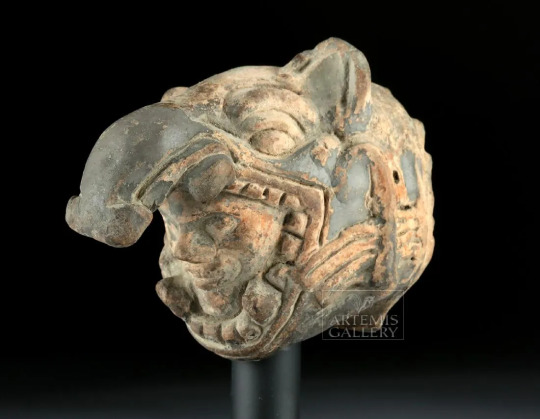

Plumbate vessel "depicting a shaman or priest wearing an enormous tapir head headdress, his face peeking out from inside of the creature's mouth." Maya / Toltec, c. 900 - 1200CE, 8.8 x 6.4cm.

Eduard Seler illustrated a similar tapir piece in 1904 ("Antiquities of Guatemala," Fig. 23d, p. 106) with a full body and wearing a shell necklace. Has anyone seen the original or any others like it? Plumbate vessels were usually manufactured in multiples so there should be others...?
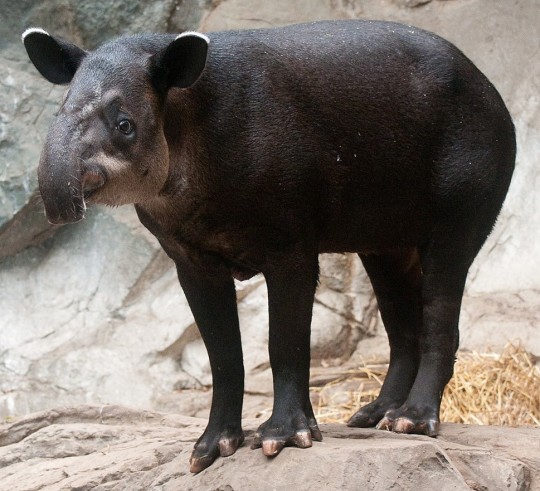
PS: Baird's Tapir (Tapirus bairdii) is the largest terrestrial mammal native to Maya territory.
#World Tapir Day#tapir#Baird's Tapir#animal holiday#Maya art#Toltec art#plumbate ware#ceramics#Eduard Seler#Artermis Gallery#ancient art#Indigenous art#pre-conquest art#mammalogy#zoology
63 notes
·
View notes
Text










Here's a bunch of Slark Robin doodles because I've become obsessed!!!!
Also stuff I've written for the species!
More coming soon!
#slark#original species#alien#alien oc#shark tail#speculative biology#silly art gallery#robin stenzke#silly ocs#speculative zoology#Slark au 🦈
6 notes
·
View notes
Text
Ad Astra Per Aspera
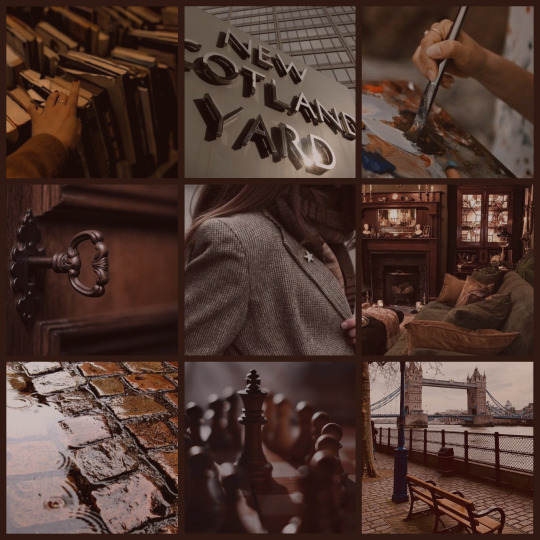
Name: "Tex" Sonata
Pronouns: xe/they/she
Universes: BBC Sherlock, Black Books, The Blacklist
Age: 31 at the start of S1
MBTI: INTJ-T
Personality in five words: Cautious, Earnest, Macabre, Playful, Curious
Orientation: AFAB Agender person. Asexual and aromantic
Nationality: Texan (Mexican-American)
Physical description: 5'0". Sonata is a POC; xe has caramel brown skin and indigenous Mexican features in the form of xyr strong nose. They have heavy lidded dark brown eyes, dark brown wavy hair that curls at the ends and reaches her lower back. Small scar on right side of jaw along their chin. Small cupid's bow lips. Dark brown freckles occasionally dot xyr skin in constellations along arms. Hourglass figure.
Clothing attire: Sonata typically wears dark/light academia attire to work and an eldritch blend of detective film noir/southern cowboy/goth lolita/Hawaiian shirt wearing stepdad when on the streets. Regarding shoes, it's either cowboy shoes, oxfords, or thick heels. Usually always has on a large chunky jumper around the flat. Wears a wristwatch at all times except in the shower even though it's waterproof. Has two piercings in both ears and typically wears silver studs.
Occupation: D.I. working for Scotland Yard. Answers to D.I. Lestrade. Has some training as a criminal profiler
Home: 221C. Between the events depicted in Ep1 and Ep 3 of S1, Mrs. Hudson renovates 221C thanks to the combined income from Sherlock and John and Sonata moves in long before the events depicted in Ep3.
Interests: marine biology, astronomy, art history, zoology, criminology, learning dying languages
Hobbies: painting, letter writing with wax seals, photography, stargazing, drawing, reading and visiting Black Books for more books and to spend time with friends (xe always brings wine), writing poetry, playing chess, exploring London museums and art galleries, feeding the local magpies, cooking/baking.
Idiosyncrasies: hums/sings when xe thinks xe is alone, bounces leg, bounces on balls of feet, fiddles/gesticulates with hands, plays with the curled ends of xyr hair, doesn't make much eye contact, is prone to staring, shies away from touch.
-Relationships-
Life partner: Jim Moriarty
Queerplatonic partners: Molly Hooper, Gregory Lestrade
Found family (adoption style): Mycroft, Sherlock, and Eurus Holmes, Dembe Zuma, Raymond Reddington, Mrs. Hudson.
Best Friends: John Watson, David Black (belongs to @13leighstreet)
Friends: Bernard Black, Soo Lin Yao, Irene Adler, Mike Stamford
-Day in the Life-
When not working at Scotland Yard or at a crime scene, Sonata can be found at their home in 221C or out somewhere in London on any random given street with someone dear to xem that she's managed to drag along on yet another 'miniventure'. Often on Fridays she enjoys visiting Black Books with a bottle of wine and baked goods they made the evening before to pacify the owner and browse the store for a new book, typically with Jim or Molly by their side.
5 notes
·
View notes
Text
Museums in Georgia offer a Cultural Exploration: Visit 7 Must-See Exhibits

Explore Georgia's rich history through its diverse museums on our exclusive Georgia tour packages 2023. Discover archaeological treasures, sacred artifacts, and artistic masterpieces spanning over 1,000 years. The National Museum of Georgia, the largest in the country, houses an extensive collection, including Urartian inscriptions, hominid bones, ceramics, ancient icons, handicrafts, and historical clothing. Explore these remarkable exhibits not only in Tbilisi but also in various display buildings. Additionally, delve into comprehensive collections of zoology, anthropology, and geology, enhancing your immersive journey through Georgia's cultural tapestry. Join us for an unforgettable exploration of Georgia's fascinating heritage in 2023.
Georgia also has a large number of local exhibition centers and art galleries where exhibitions from diverse collections are frequently opened. The majority of art galleries are private, although this does not stop them from exhibiting the best Georgian masterworks from previous centuries. Please be aware that practically all museums in Georgia close at 18 o'clock on Mondays (and even earlier in the winter).
Museum of Georgia
The Museum of Georgia, a section of the National Museum of Georgia, is situated on Shota Rustaveli Avenue in the heart of Tbilisi. Taxis and public transportation are both simple ways to get to the Museum. The Museum in Tbilisi is home to an exceptional collection of ancient artifacts from all around the world, including items from the third century. A permanent exhibit about the Caucasus' natural history is available to visitors to the Millennium BC.
Soviet Occupation Museum
The Georgian History Museum houses the Soviet Occupation Museum, which depicts the 70 years of Soviet authority in Georgia, starting in 1921 and ending with its fall in 1991. Along with other artifacts depicting Georgia's social and political tyranny during the Soviet era, you can view the personal files of "rebellious" prominent personalities in Georgia as well as preparations to have them executed or exiled. One of the train cars where the 1924 national revolutionaries were executed is also housed in the hall.
National Gallery, Tbilisi
The National Gallery is one of the amazing places to visit in Georgia if you love art and want to see Georgian painters' greatest works. The structure was constructed in response to the Russian tsar's 1888 plan to establish a military and historical museum to highlight the superiority of the Russian Empire inside its borders. The works of Georgian artists from the 18th and 19th centuries, such as Niko Pirosmani, Lado Gudiashvili, David Kakabadze, and the sculptor Iakob Nikoladze, are currently on display in the museum's permanent collection.
Dadiani Palace Museum
In addition to these objects, the museum boasts a beautiful library with books from Napoleon's personal library, furniture in the French and Russian styles, and personal gifts from British, Russian, and foreign nobles to the Dadiani family. Dadiani Palace in Zugdidi, Samegrelo region, is home to more notable remnants of both Georgian and European culture. Over 45,000 pieces, some of which were part of the Dadiani family collection, may be found at the museum. The death mask of Napoleon Bonaparte and the robe thought to have been worn by the Virgin Mary are two of the most important treasures on display here. Salome Diadiani Murat, the spouse of Napoleon's nephew Achille, brought the mask to Georgia.
Sighnaghi Museum
Georgia's most renowned wine-producing region is Akheti. The best tourist spot that must be seen practically all year round is this one. Home to a number of museums in Kakheti, but one is unquestionably worthwhile. This is the Sighnaghi Museum, which is situated in the romantic city of Sighnaghi. Five thousand ethnographic relics, including textiles, copper and wooden household goods, agricultural tools, winemaking supplies, jewelry, and musical instruments, are on display at the Sighnaghi Museum. You may also see the extensive numismatic collection of around 2000 coins, which includes old Sassanid Persian coins as well as local coinage issued by Georgian kings Erekle, Tamar, and Lasha-Giorgi. On the second floor of the museum, Niko Pirosmani's transient paintings are also on display.
Tsinandali Museum
In the Akheti district, the Tsinandali Museum is housed in the residence of Alexander Chavchavadze, a poet and aristocrat from Georgia. Various slices of furniture, works of fine and decorative art, and manuscripts from Chavchavadze's collections are on show in the museum. The house-Museum also features a beautiful nineteenth-century garden and a wine cellar that was constructed in 1835. Regional buses and taxis are two ways to get to Sighnaghi and Tsinandali. The stations are a short walk from several museums in Georgia.
Svaneti Museum and Tower of Margiani
Visitors visiting Georgia are required to climb the Svaneti Mountains. As the tsars transported their wealth to the mountains during invasions, the Samegrelo-Zemo Svaneti region served as the Keeper of the Georgian Treasury for centuries. The Svaneti Museum in Mestia, which is a division of the National Museum of Georgia, currently houses these artifacts, making it one of the most significant collections kept in Georgian institutions. With its renovated media library, modified foyer, and roof terrace (in the summer), the Svaneti Museum serves as an important regional social space in addition to exhibiting one-of-a-kind masterpieces of domestic and international decorative and applied arts.
Before continuing your ascent to Ushguli, which is thought to be the highest continuously inhabited settlement in Europe, a cup of delectable coffee at a cafe with a panoramic view of the towers of Svaneti and the summit of Tetnuldi will lift your spirits and give you new energy. Regional buses go from Zugdidi and Tbilisi to Mestia. The Mestia city center is just a short stroll from the Museum to visit during Georgia tours.
3 notes
·
View notes
Text
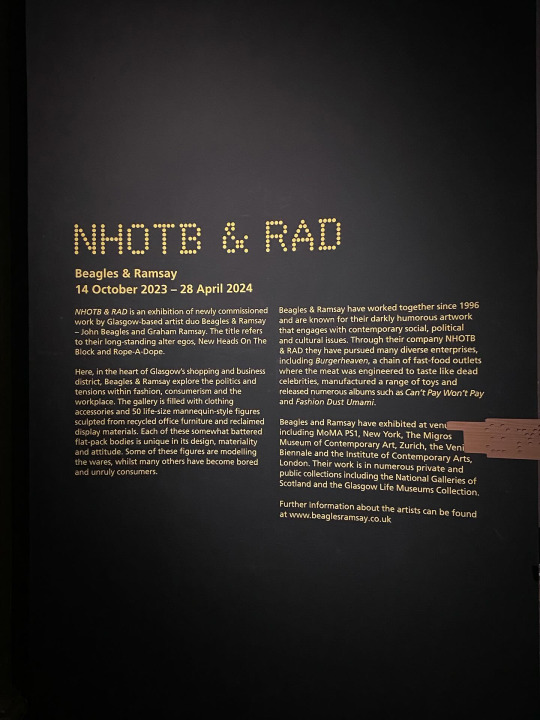

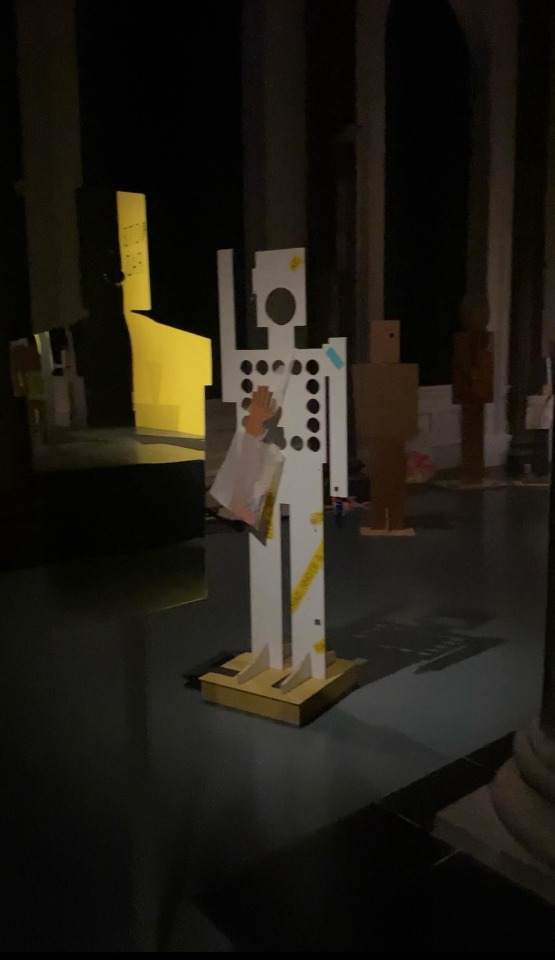
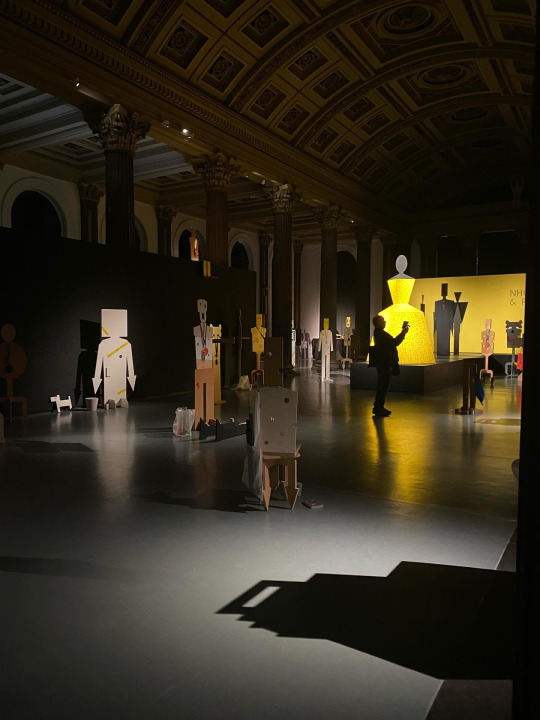
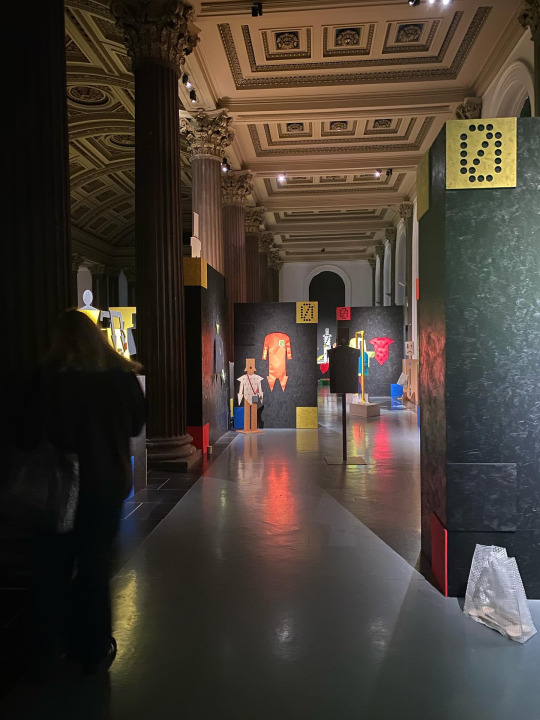
This exhibition was held in the Gallery of Modern art and was called Nhotb and Rad by the Beagles and Ramsey. The exhibitions aim was to “explore the politics and tensions within fashion, consumerism and the workplace” I enjoyed how they turned a 2D shape 3D with lighting and the ways in which the mannequins have been positioned. The lights were dim and it felt like we were in a high fashion runway type of feel which is cool because the exhibition was about consumerism.
Everything was made from recycled office furniture and reclaimed display materials. I enjoy the fact they are cutting down waste by doing this.
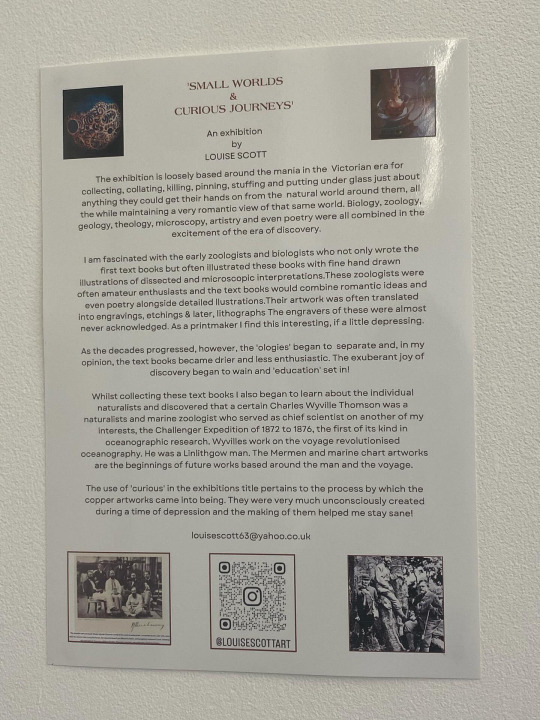

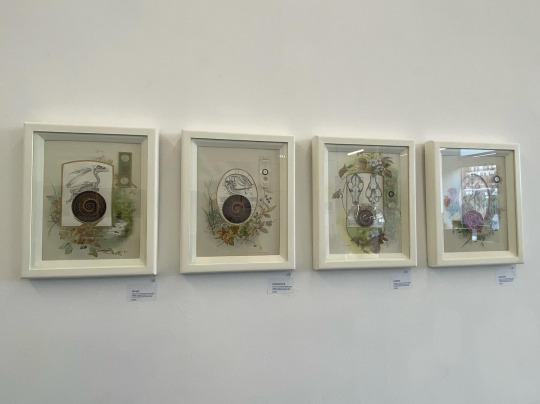
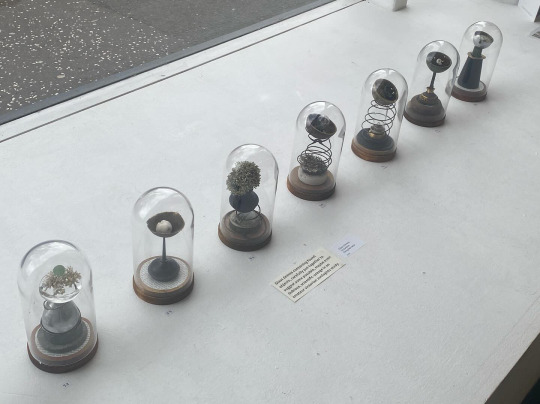

This exhibition was held in Wasp Studio- south block by artist Louise Scott, I loved the space was filled with dainty objects that become more interesting the more you look at them. The art its self is very visually appealing and beautiful. Her work explored Victorian zoology and how their fascination with killing, cataloguing ,collating, pinning, dissecting and putting under glass which is quite shocking to me as from afar it looks so peaceful. Her work has a scientific feel to it with a lot of text behind some of her artworks it was very cool to see.
0 notes